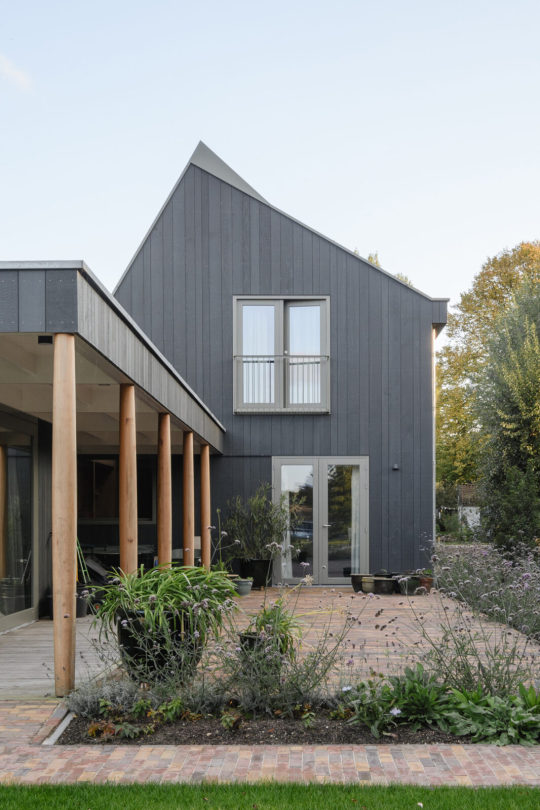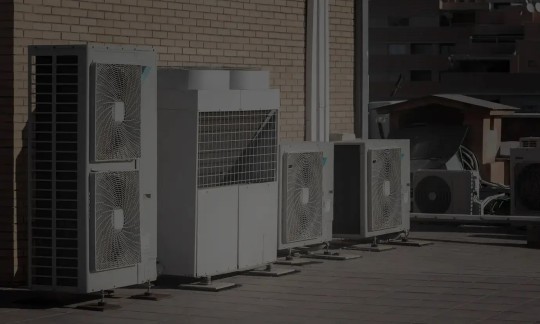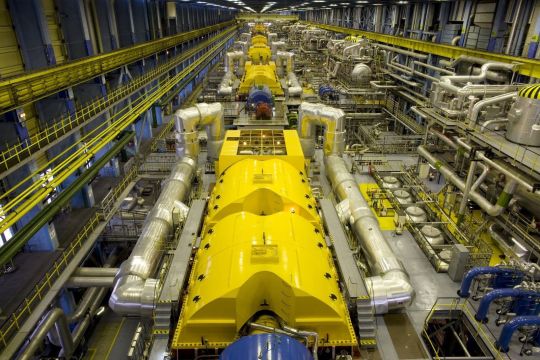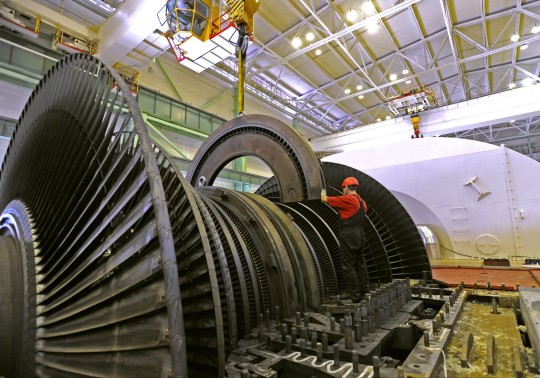#energy-efficient buildings
Explore tagged Tumblr posts
Text

EPACK Prefab offers customized solutions for Industrial Factory Buildings, delivering durable, cost-effective, and efficient structures. Designed with precision using advanced pre-engineered techniques, our factory buildings ensure optimal functionality and space utilization.
✅ Key Features:
Quick construction with PEB technology
High-quality steel ensuring strength and durability
Energy-efficient designs with insulated panels
Custom layouts to suit specific industrial needs
���� Contact EPACK Prefab today for innovative factory building solutions tailored to your requirements!
#Industrial Factory Building#Factory Building Construction#Pre-Engineered Buildings#PEB Structures#Industrial Construction Solutions#Steel Factory Buildings#Warehouse Construction#Prefabricated Industrial Buildings#Durable Factory Buildings#Custom Industrial Structures#EPACK Prefab#Modern Industrial Construction#Factory Building Design#Turnkey Construction Solutions#Industrial Building Manufacturers#Energy-Efficient Buildings#Steel Structures for Factories#Fast Construction Solutions#Prefab Industrial Structures#Reliable Factory Buildings
0 notes
Text
So I miiiight have bought the Temple pack because I had a bunch of plat saved up (also I just wanted their signa and had just bought their Gemini skin, so very much a "why not, I'm already this deep" moment lol) and I'm really liking their gameplay! They're really fun!
Now if only I had the slightest idea how to figure out builds beyond "ability strength big" 'cause this frame has been out all of two seconds and no one has a build video out for them yet 😭
#warframe#i usually go with GrindHardSquad builds but he might be a minute with his video#I'm noticing energy isn't a huge problem once i get going#so maybe something that sacrifices efficiency for another stat?#more strength is the obvious choice but maybe a bit more range?#Lizzie doesn't shoot quite as far as I'd like for being stuck in that weapon#or maybe I'm using her wrong#haven't really played with all her status effects just yet#rank 26 and still doesn't know how to play the damn game lmao
8 notes
·
View notes
Text







House Ringvaartplas, Rotterdam - Korteknie Stuhlmacher Architecten
#Korteknie Stuhlmacher Architecten#architecture#design#building#modern architecture#interiors#house#minimal#house design#interior design#timber#wood house#warm#light#living room#roof light#timber cladding#low cost#energy efficient home#netherlands
127 notes
·
View notes
Text
Understanding Zero Energy Buildings: A Sustainable Solution
Key Points Zero energy buildings produce as much energy as they consume using renewables. They use efficient designs and technologies like solar panels and heat pumps. They’re becoming more common to fight climate change and save energy costs. What Are Zero Energy Buildings? Zero energy buildings are structures designed to have no net energy consumption over a year. This means they generate…
#Building Performance#Clean Energy Solutions#climate-change#Eco-Friendly Buildings#energy#Energy Efficiency#Environment#Environmental Engineering#Green Building Design#Renewable Energy#sustainability#Sustainable Architecture#Sustainable Construction#Zero Energy Buildings
2 notes
·
View notes
Text
after some xaku testing in the simulacrum, i understand the power of the lost now... that armor strip is insane
chewed through 20 140 lvl heavy gunners in like 2 seconds flat with grasp of lokh alone
i get it now

#andro talks#I UNDERSTAND NOW#i think i almost have a sp build now#still need to forma them at least once and unlock the exilus slot#2 of my mods arent max rank either bc im broke#and my energize and molt augumented arcanes are both r1#but holyshit STILL#im pretty sure i never had a damage output this high#downside is that its SO energy expensive#55% efficiency is beating my ass#equilibrium will need to do some heavy lifting here#xaku craves that energy
9 notes
·
View notes
Text
"AC Maintenance Tips for Homes and Businesses in Saudi Arabia’s Harsh Climate"

Air conditioning systems are vital for both homes and businesses in Saudi Arabia, where temperatures often soar to extreme levels. Ensuring that your AC unit functions at its best is essential not only for comfort but also for maintaining efficiency and reducing energy costs. Proper maintenance can prevent unexpected breakdowns during the hottest months, while also prolonging the lifespan of your system.
To maintain an efficient and reliable cooling system, many property owners opt for professional AC maintenance services to ensure their air conditioning units stay in top condition. Regular maintenance services can help identify potential issues before they escalate, avoiding costly repairs or the need for a full replacement.
1. Regular Filter Cleaning and Replacement
One of the simplest yet most effective maintenance tasks for any air conditioning system is regular filter cleaning or replacement. In Saudi Arabia’s dusty environment, filters can quickly become clogged with dust and debris, making the system work harder and reducing efficiency. Dirty filters restrict airflow, which not only increases energy usage but also decreases the unit's ability to cool properly. For both homes and businesses, it is recommended to clean or replace filters every one to three months, depending on the frequency of use.
2. Inspect and Clean Condenser Coils
The outdoor unit of your air conditioning system contains condenser coils that are responsible for releasing the heat absorbed from the indoor air. These coils are exposed to the elements, and in a harsh climate like Saudi Arabia, dust, dirt, and debris can easily accumulate. When the coils are dirty, the system's ability to dissipate heat is compromised, leading to reduced cooling performance and higher energy consumption. Regular cleaning of the condenser coils helps ensure optimal performance and efficiency.
3. Check Refrigerant Levels
For your AC system to cool effectively, it needs the correct amount of refrigerant. Low refrigerant levels can lead to inadequate cooling, causing the system to run longer and work harder. Over time, this can increase wear and tear on the unit and even lead to system failure. It’s important to have a professional check refrigerant levels during routine maintenance and top off as necessary to keep your system running smoothly.
4. Inspect Ductwork for Leaks
Leaky ductwork can significantly affect the efficiency of your air conditioning system, as cool air escapes before it reaches its intended destination. For businesses and larger properties, this can result in uneven cooling, higher energy bills, and an overworked AC unit. Regularly inspecting ductwork for leaks or gaps and sealing them as needed will help ensure that your air conditioning system is delivering cooled air efficiently.
5. Schedule Professional Maintenance
In Saudi Arabia’s extreme climate, scheduling professional AC maintenance at least twice a year is highly recommended. Professional technicians have the knowledge and tools to thoroughly inspect your system, clean essential components, and identify potential problems before they escalate. Businesses, in particular, can benefit from having a comprehensive maintenance plan to avoid costly downtime due to AC failure.
Whether you own a small home or manage a large commercial facility, regular AC rental service and maintenance are crucial for ensuring the longevity and efficiency of your cooling systems.
6. Optimize Thermostat Settings
Maintaining an optimal temperature setting on your thermostat can greatly impact energy usage and overall system performance. In Saudi Arabia, where temperatures can reach extreme highs, setting your thermostat just a few degrees higher can significantly reduce the strain on your AC unit. Additionally, programmable thermostats allow you to set different temperatures based on your schedule, which can help save energy when cooling is not needed.
7. Keep the Area Around the Outdoor Unit Clear
The outdoor unit of your air conditioner needs adequate airflow to function properly. Debris such as leaves, dirt, and plants can obstruct the airflow, causing the unit to work harder and reducing its efficiency. Regularly check and clear any debris from around the outdoor unit, and make sure that there is at least two feet of clearance on all sides to promote optimal airflow.
8. Ensure Proper Ventilation
Ventilation plays a crucial role in the effectiveness of your AC system, particularly in business settings where large numbers of people and equipment generate heat. Poor ventilation can increase humidity levels, making it harder for your air conditioner to cool the space. Make sure that vents and return air registers are not blocked by furniture or other obstructions, and consider using ceiling fans to help distribute cool air more evenly throughout the space.
Conclusion
Maintaining your air conditioning system is essential in Saudi Arabia’s harsh climate, where efficient cooling is a necessity rather than a luxury. By following these AC maintenance tips, you can ensure that your system operates efficiently, keeps energy costs under control, and provides reliable cooling when you need it most.
Investing in regular AC maintenance service is key to extending the life of your system and avoiding the discomfort and expense of unexpected breakdowns. Whether for a home or business, proper maintenance is a proactive step toward achieving consistent and cost-effective cooling year-round.
#Commercial chiller maintenance#HVAC maintenance#Chiller efficiency#AC maintenance service#Chiller rental service#Cooling solutions Saudi Arabia#Energy-efficient cooling#Chiller system repair#Chiller optimization#Facility management#Preventive maintenance#Refrigerant monitoring#Compressor maintenance#Saudi Arabia HVAC services#Cooling equipment upkeep#HVAC Maintenance#Chiller Maintenance#Commercial Cooling Solutions#Energy Efficiency#Saudi Arabia Climate Control#Building Management Systems#Facility Management#AC Maintenance Services#Chiller Rental Services#Sustainable Cooling Solutions#Industrial Cooling Systems#Preventive Maintenance Tips
3 notes
·
View notes
Text
"Boil water to turn fan" as if multistage steam turbine generators are not one of the sexiest kinds of machines every made


nuclear power is impressive until you get up to why. "we use the most precisely engineered machinery ever created to split atoms to release energy" oh yeah how come? "boil water to turn a fan" get the fuck out
#its genuinely crazy the math and engineering that go into making these absolutely massive steam turbines#its an incredible balancing act to optimize between the interconnected variables of pressure velocity and temperature in order#to extract as much energy as possible from the steam as it moves through the system#especially like. those generators need to maintain a very precise rotational speed in order to prevent the coupled generator#from going out of phase with the power grid#(3000 RPM for 50 Hz grids and 3600 RPM for 60 Hz grids)#like the reactor part sounds like a lot of engineering work (and it is!) but like. the turbine is fucking incredibly impressive too#each one of those turbine stages needs to have very specifically shaped blades in order to control steam pressure drop and steam velocity#and the blades need to be able to physically handle being in a wet (at least for nuclear plants where the steam is pretty wet) high temp#environment and constantly being spun at high rotational speeds for decades at a time.#we had to develop specialized nickel titanium superalloys with tightly controlled crystalline structures in order to build turbines this big#stare into the depths of “wow we really just use steam to spin a big fan that sounds simple” and you encounter#the lifes work of thousands of mathematicians computer engineers material scientists and mechanical engineers#the first device we could call a steam turbine was made as a toy in tthe first century ancient greece and egypt#the first steam turbine with a practical use was described in 1551 in Ottoman Egypt. it was used to turn a spit of meat over a fire.#the first modern multistage impluse steam turbine was made in 1884 and revolutionized electricity generation and marine propulsion#in the 141 years since there have been more improvements than one could even list#from major design changes credited to great men to miniscule efficiencies and optimizations gained from tweaking the composition of an alloy#idk. i think its beautiful to think about the web of human knowledge woven collectively by thousands of hands across history#could you imagine what the ancient greek engineers who first put together the prototype for an aeolipile would think to see what we have#made now. could they even recognize our designs as belonging to the same category of object as their little toy#anyway#appreciate the humble steam turbine with the same eye you give to the reactor core#mine#just my thoughts
68K notes
·
View notes
Text
The Benefits of Infrared Inspection for Your Property
Based on Thermoelite’s KnowledgeLet’s face it: property ownership is a big responsibility. Regardless of whether it’s your home, office, or an investment property, you certainly don’t want to be surprised by issues hidden to the naked eye. This is where infrared inspection comes in—and at Thermoelite, we want to make infrared inspection available, proactive, and meaningful to you.I know what you’re saying: “what is infrared inspection, and so what?” Good question; let’s clear that up.What is Infrared Inspection?Infrared inspection is simply a non-invasive diagnostic process that uses thermal imaging cameras to evaluate temperature differences in a structure. Sound complicated? It is! But here is the kicker: it is very efficient. Thermal imaging cameras are able to “see” thermal patterns that are not visible, meaning that you could have issues below the surface that are causing you problems, sometimes in the form of moisture intrusion, electrical issues, thermal or vapor leakage, insufficient insulation, or even pests, the point is that all of these events can occur without peeling away your walls or both. At Thermoelite, we pride ourselves on preventive and diagnosis the issues before they present themselves. I prefer to think of an inspection as a health check-up for your property. The issue may be invisible, but that doesn’t imply it is not there. Water damage or electrical damage can take a long time to manifest and even longer to repair once they are visible.
Why Infrared Inspections are a Game ChangerThis is why more and more homeowners and business owners are choosing Thermoelite for infrared inspections:
Detect Moisture without DamageWater damage can be tricky. Chances are, by the time you see the stains or feel the dampness, the problem has already been going on for weeks, if not months. With infrared inspection, we can find moisture behind walls, ceilings or floors before there are any visible indications.This results in being ahead of any problems, including mold. Nobody wants to deal with mold, because it can be expensive, ugly and a health risk. Thermoelite will find the source of the problem early and save you the headache (and wallet headache) later.2. Pinpoint Insulation Gaps or Air LeaksHave you ever thought your energy bills were higher than they should be? It could be from missing insulation or air leaks. An infrared inspection will help to find energy inefficiencies that you cannot see with your eyes alone.Whether it is breaking insulation in your attic, or air coming through improperly sealed windows, Thermoelite will find it in seconds and demonstrate how to improve energy efficiency and save you money long term.3. Prevent Electrical FiresElectrical systems can heat without ever triggering an alarm.
Why Select Thermoelite?Let's be honest-
there are numerous companies that offer thermal imaging. At Thermoelite, we believe in going the extra mile. Our team is comprised of certified professionals who not only know how to run the newest infrared cameras but can also interpret the data and give you practical solutions.We don't just show you a heat map and leave. We will explain the meaning of the findings, what to do next, and even how to mitigate future problems. And as for the report? It's clear, thorough, and easy to understand.We have worked with homeowners, real estate investors, insurance companies, restoration experts, and commercial clients throughout the region. Whether it's a small residential project or a large commercial facility, we consistently apply the same care, precision, and professionalism.When Should a Property Owner Get an Infrared Inspection?Great question! You do not have to wait until there is a problem. Here are some ideal times to book an infrared inspection:Prior to purchasing a new propertyAfter a flood, leak, or stormIf you hypothesize mold or moisture that is not visibleAs part of regular preventative maintenanceIf you experience a sudden spike in your energy bill prior to budget adjustmentsFollowing renovations, to
DiscussIf you've never done an infrared inspection,
it may sound like a luxury. But, in actuality, an infrared inspection is one of the smartest, most cost-effective choices available for your property.At Thermoelite, we make getting an inspection simple, affordable, and relaxing. You don't have to be an expert on building science, we will guide you through all areas, including: where to access information, your questions to ask, and full confidence in interpreting the results of the infrared inspection.Are you ready to schedule an inspection? Do you wonder if infrared could help you? Contact us—we are looking forward to speaking with you. At Thermoelite, we care about you and your peace of mind is our most important value.
#Infrared Inspection#Thermal Imaging Inspection#Building Inspection Technology#Thermographic Inspection#Moisture Detection Services#Energy Efficiency Inspection#Electrical Infrared Scanning
0 notes
Text
U.S. Building and Construction Plastics Market Poised for Steady Growth Amidst Technological Advancements and Sustainability Initiatives
The U.S. building and construction plastics market is experiencing consistent growth, driven by infrastructure expansion, technological innovation, and a growing focus on sustainability in construction practices. The market is valued at USD 31.6 billion in 2024 and is projected to reach USD 49.2 billion by 2032, registering a CAGR of 5.8% during the forecast period. Key Drivers of Growth: 1.…

View On WordPress
#building plastics#construction plastics#energy-efficient materials#green building materials#lightweight building materials#plastic construction materials#polyurethane insulation#PVC in construction#U.S. plastics market
0 notes
Text
Best Residential & Landscape Architectural firms in Bhubaneswar
Bhubaneswar, the capital city of Odisha, is rapidly evolving into a hub of modern infrastructure and stylish living. With the city’s growth comes a rising demand for thoughtfully designed spaces—both indoors and out. As a result, Lokmatri is playing a crucial role in shaping the cities residential and landscape aesthetics.

Whether you're building your dream home or planning to redesign your outdoor environment, working with the Best Architects in Bhubaneswar ensures that your vision comes to life with creativity, functionality, and precision. These professionals blend traditional charm with contemporary styles, offering tailor-made solutions that reflect your personality and lifestyle.
Residential Architects in Bhubaneswar:
Designing a home is more than just creating a structure—it’s about building a space that complements your way of living. Residential Architects in Bhubaneswar focus on creating designs that balance form and function. From compact urban homes to luxurious villas, they understand how to utilize space efficiently while enhancing comfort and beauty.
These experts also handle crucial details like building regulations, structural integrity, energy efficiency, and smart space planning. With their expertise, homeowners can expect stylish, durable, and sustainable living spaces—perfect for Bhubaneswar’s growing urban landscape.
Landscape Architects Bhubaneswar
Outdoor spaces are just as important as the interiors. Landscape architects in Bhubaneswar specialize in transforming open areas into stunning, usable environments that elevate your property’s appeal. Whether it’s a peaceful garden, a vibrant courtyard, or a modern outdoor lounge, these spaces can transform your home. Well-planned landscapes dramatically improve your quality of life.
They incorporate natural elements, lighting, water features, and sustainable materials to ensure your outdoor space feels like a seamless extension of your home. These designs are not only beautiful but also environmentally responsible, supporting biodiversity and reducing urban heat.
Choosing the Right Architectural Partner
Selecting the right firm is essential to achieving the perfect blend of aesthetics and functionality. While there are many Architectural Firms in Bhubaneswar, choosing one that understands your unique needs makes all the difference. From initial concept to final execution, your architect should work closely with you to bring your ideas to life with precision and care.
One standout firm in the region is Lokmatri, known for its commitment to design excellence in both residential and landscape architecture. Their projects reflect a deep understanding of space, nature, and the local context—resulting in spaces that are visually striking and highly livable.

In conclusion, whether you’re constructing a new home or revamping your outdoor space, partnering with the best architects in Bhubaneswar ensures a seamless and rewarding experience. With the right guidance, your dream space can become a stunning reality that reflects your personality and enhances your everyday life. Are you ready to transform your space? Start by consulting with Bhubaneswar’s top architects today.
#Architectural firm#Best architects#Residential architects#Landscape architects#MEP services#MEP contractors#Industrial MEP services#Data center MEP services#Energy-efficient MEP solutions#Civil engineering services#Structural engineering services#Luxury interior design#Retail store interior#Hospital interior design#Hotel interior design#Interior design company#Home interior designers#Commercial interior design#Office interior design#Corporate office interiors#Modular kitchen Design#Pre-engineered buildings#Steel building construction#Warehouse construction company#Commercial construction company#Construction company
1 note
·
View note
Text

Eco-Friendly House Designs in Adelaide
Building a home that is both stylish and environmentally conscious is easier than ever with Lumea Group. As a leader in eco-friendly house designs in Adelaide, Lumea Group creates sustainable homes that reduce environmental impact while enhancing comfort and efficiency.
0 notes
Text
How Ajman’s Glass Testing Laboratories Support Sustainable Architecture? | +971 554747210
Introduction Sustainability has become a defining pillar of modern architecture, especially in the United Arab Emirates (UAE), where urban development is evolving at a rapid pace. Ajman, a key emirate in this growth, is witnessing a rise in eco-conscious construction. One of the unsung heroes of this movement is the Glass Testing Laboratory. In Ajman, these laboratories play a pivotal role in helping architects, developers, and contractors choose glass solutions that not only meet aesthetic and safety needs but also support sustainable architecture.
Why Glass Matters in Sustainable Architecture Glass is a dominant material in modern building design due to its ability to let in natural light, create open spaces, and enhance visual appeal. However, not all glass contributes equally to sustainability. The right kind of architectural glass can:
Improve energy efficiency
Reduce reliance on artificial lighting
Control solar heat gain
Enhance thermal insulation
Ajman’s certified glass testing laboratories assess these properties to ensure glass products are environmentally responsible and suitable for green building projects.
1. Thermal Insulation Testing One of the most critical roles of a Glass Testing Laboratory in Ajman is to evaluate thermal performance. This includes testing the glass for its U-value—a measure of how well the glass prevents heat from escaping a building. Lower U-values mean better insulation, resulting in:
Reduced heating and cooling demands
Lower energy bills
Decreased carbon footprint
By providing accurate U-value reports, laboratories help developers select glazing systems that comply with UAE Green Building Regulations.
2. Solar Control and Light Transmittance Analysis Sustainable buildings aim to strike a balance between maximizing natural daylight and minimizing solar heat gain. Ajman’s glass testing facilities conduct assessments such as:
Solar Heat Gain Coefficient (SHGC) testing
Visible Light Transmittance (VLT) measurement
UV radiation filtering evaluation
These tests ensure glass products optimize light use while preventing excess heat buildup, creating more comfortable indoor environments and improving HVAC efficiency.
3. Durability and Environmental Resistance Ajman’s climate—with its high UV index, temperature fluctuations, and humidity—can compromise the longevity of building materials. Glass testing labs simulate harsh environmental conditions to test for:
UV degradation
Thermal shock resistance
Moisture and salt exposure
Using test results, architects can select glass that maintains performance and aesthetics over time, reducing the need for frequent replacements—a key factor in sustainable architecture.
4. Acoustic Performance Testing Urban expansion in Ajman brings increased noise pollution. For sustainable buildings, acoustic comfort is essential. Glass testing laboratories offer:
Sound Transmission Class (STC) rating tests
Acoustic insulation evaluations for laminated glass
These results help developers design sound-proof and energy-efficient structures, improving occupant comfort and sustainability.
5. Compliance with Green Building Certifications Many projects in Ajman aim to earn green certifications like LEED (Leadership in Energy and Environmental Design) or Estidama. Glass Testing Laboratories support these efforts by:
Providing documentation for glass performance
Certifying compliance with specific energy and environmental benchmarks
Recommending glazing solutions that align with certification requirements
This adds credibility to green construction projects and supports the emirate’s long-term sustainability goals.
6. Lifecycle Assessment and Environmental Impact Sustainable construction considers the full lifecycle of building materials. Glass Testing Laboratories in Ajman often provide support in:
Assessing embodied energy of glass products
Advising on recyclable and low-emission glass types
Evaluating the potential for reuse or recycling post-demolition
These insights help reduce the overall environmental impact of the building and promote circular construction practices.
7. Innovation in Smart and Energy-Efficient Glass Advanced materials like low-E (low emissivity), electrochromic, and double-glazed units are becoming more popular in Ajman’s green buildings. Certified laboratories test these cutting-edge products for:
Spectral selectivity
Insulation efficiency
Response to environmental conditions
Testing validates the performance of smart glass technologies, encouraging their wider adoption across sustainable architectural projects in Ajman.
8. Assisting in Material Selection for Sustainable Design Glass Testing Laboratories don't just test materials—they also act as consultants. They assist architects and designers by:
Recommending optimal glazing types based on project location and design intent
Interpreting testing data to guide material choices
Helping balance sustainability with aesthetics and budget
This collaborative approach ensures that green building goals are met without compromising on safety or performance.
9. Supporting Government and Municipality Initiatives Ajman’s government actively promotes sustainable urban development. Glass Testing Laboratories support this vision by:
Aligning test procedures with Ajman Municipality regulations
Contributing to research on energy efficiency in construction
Participating in local sustainability initiatives and workshops
This partnership between laboratories and government strengthens the emirate’s transition toward greener living spaces.
10. Contributing to Long-Term Operational Efficiency Ultimately, sustainable architecture is about more than just construction—it’s about operational performance. By ensuring the use of high-quality, tested glass, Ajman’s labs help buildings achieve:
Better indoor environmental quality
Lower maintenance costs
Reduced energy consumption over time
This long-term impact is essential for owners, tenants, and the environment.
Conclusion In the journey toward sustainable and responsible urban growth, Glass Testing Laboratories in Ajman are indispensable allies. Through rigorous testing, expert guidance, and a commitment to green building principles, these labs empower architects and developers to make smarter, more sustainable choices. As Ajman continues to embrace eco-friendly construction, certified glass testing services will remain a critical part of ensuring that structures are not only beautiful and safe—but also built for a greener future.
#Glass Testing Laboratory#sustainable architecture Ajman#UAE green buildings#glass performance testing#LEED certification Ajman#energy-efficient glass#eco-friendly construction UAE
0 notes
Text
Sustainable building materials are changing the face of construction, offering eco-friendly solutions that prioritize durability, energy efficiency, and reduced environmental impact. Recycled steel and bamboo are excellent examples of materials gaining popularity for their strength and renewability. These options are now being widely adopted by construction contractors in Indianapolis, IN, who aim to build smart and deliver high-quality results while minimizing their carbon footprint.
0 notes
Text
youtube
Premium Residential Construction Services for Custom Homes & Townhomes | TX Sparks
TX Sparks is a top-tier residential construction company specializing in custom homes, townhomes, and spec homes. Our expert team provides end-to-end services, including site analysis, architectural design, and construction management, ensuring your home meets the highest standards of quality and sustainability. With a focus on energy-efficient building practices and superior craftsmanship, TX Sparks delivers homes that are both beautiful and functional. Transform your vision into reality with our trusted residential construction services.
#residential construction#custom homes#townhomes#spec homes#home building#construction services#sustainable construction#energy-efficient homes#architectural design#residential development#home design#building contractors#home construction management#residential builders#quality craftsmanship#Youtube
0 notes
Text
Dave Williams, Senior Principal at PAE Engineers – Interview Series
New Post has been published on https://thedigitalinsider.com/dave-williams-senior-principal-at-pae-engineers-interview-series/
Dave Williams, Senior Principal at PAE Engineers – Interview Series


Dave Williams, is the Senior Principal at PAE Engineers, he has 20 years of experience in mechanical engineering. Through his extensive work with data centers, laboratories, and healthcare facilities, he has become exceptionally skilled at providing designs for controlled environments. Dave focuses on reducing operating and maintenance costs, and increasing energy efficiency. He counts Kaiser Permanente, Legacy, Tuality, and PeaceHealth among his long-term clients. A LEED Accredited Professional, Dave has worked on many sustainable projects, including several LEED and Net-Zero Energy certified buildings.
PAE Engineers specializes in designing energy-efficient, high-performance data centers that prioritize sustainability and operational efficiency. Their work integrates innovative cooling solutions and advanced engineering to optimize performance while reducing environmental impact.
Can you take us back to your first experience designing a data center? What was the project, and what were some of the biggest challenges or learning moments you encountered?
The first major was memorable and, honestly, one of my favorites. It was a conversion of an old semiconductor facility into a data center. That conversion, as you can imagine, had multiple challenges, from repurposing the equipment to different operating conditions, adding resiliency, and ensuring proper operation with the reuse of equipment was challenging. Commissioning was quite challenging as well, and ensuring all components, especially the cooling equipment and controllers, could ramp up quickly on a power failure created some interesting and fun challenges to solve. In the end, it all worked great, and the team really bonded in the collaboration of many players to execute and turn over a good work data center facility.
How have data center design priorities shifted in the last 20 years? What are the biggest changes you’ve seen in cooling, power distribution, and redundancy?
Priorities have shifted quite a bit. Data centers exist to provide a resilient, high-uptime environment for servers. As servers have become significantly more powerful and adaptable to environments, the facilities have changed. They have become very efficient, pushing the envelope of energy efficiency from the transformation and transportation of power to the racks, and the HVAC systems that provide a stable environment for the facilities to operate in have changed from large power-consuming equipment to innovative high-efficiency systems that allow for much lower PUE’s than ever before.
What are the biggest challenges in designing data centers right now? How do factors like power availability, cooling capacity, and stricter regulations impact design decisions?
The availability of reliable power is typically the largest factor in locating a data center. Land availability, proximity to fiber, security, and climate concerns all factor in, but finding power seems to be a big driver.
How does PAE Engineers integrate sustainability into data center projects from the initial planning stages?
Starting with the end in mind is always a good reminder. Sustainability is a broad term that is more than just energy, but with the amount of energy needed, that typically gets the most attention. Setting goals for low PUE and sticking to that through the course of design is a guiding light and helps shape decisions. As noted before the goal of a data center is to power the servers. Any other energy used at the facility supports that and is where we want to focus our efforts on reducing it. Cooling systems are the main offenders in this, and starting there is really where we like to start. Considering the climate the facility will be located in and optimizing the system to maximize free cooling and considering ways to avoid refrigeration systems with large compressor motors really helps the efficiency. Subsequent review of heat recovery with support spaces from the data halls, water reduction measures, controls optimization, and even considerations like renewables and rainwater capture are additional items considered when designing for a high level of sustainability in the facility.
What are the most promising innovations driving energy and water efficiency in data centers today?
As servers become more resilient and able to handle warmer temperatures, the ability to increase the hours in the year for free cooling has really had an impact. Because of this, many of the data centers deployed now have some of the most innovative and energy-efficient systems installed. Liquid cooling with more dense capacity servers brings new challenges and opportunities, as water has much more potential for large-scale heat transfer than air.
How do you balance high-performance computing demands with sustainability goals? Are there trade-offs when lowering PUE (Power Usage Effectiveness) or water usage while maintaining reliability?
Not if done correctly. The infrastructure must support the needs of the server racks with a resilient deployment, but if done thoughtfully, it can be optimized to function very efficiently, reducing the PUE and water consumption without compromising the compute’s performance demands.
What challenges do you face when implementing renewable energy, advanced cooling, or other sustainability measures in high-density data centers?
The challenges vary from project to project. Sometimes, there may be local code or jurisdictional hurdles to overcome, land may not be available to deploy a certain type of system, or honestly, based on the cost to implement an innovative design, the benefit doesn’t justify implementing it. What works well for one climate or site may not be the best for another, so each project should consider this.
How are AI workloads changing data center design? What adjustments are needed for power and cooling to support high-density AI racks?
Densification can affect both the power and cooling systems quite a bit. Larger feeds, breakers, piping, etc., all supporting a much more localized power load create challenges, but also opportunities to rethink how the infrastructure should be laid out, located, and deployed in a way that is safe, resilient and functional.
What role do you see AI playing in optimizing energy efficiency and real-time operations in data centers?
It is massive. The ability to create a machine learning facility that deploys massive computing power towards the optimization of energy-consuming systems that serve not all data centers but the built environment in totality is enormous. Peak shaving, understanding how each facility varies in its operation, and optimization on a specific case-by-case basis is a huge opportunity. Rolling compute across multiple facilities in real-time with adjustment to varying climate zones. I can only imagine how much AI learns about the operation. The suggestions and optimization it could deploy would have a massive effect on how the systems that serve these facilities can be adjusted and tuned.
What might the next generation of AI-driven data centers look like? Do you anticipate widespread adoption of immersion cooling, onsite renewable power, or fully automated facilities?
Continually higher-density racks are the trend and will likely continue for a few years. That densification creates interesting opportunities for the physical size of data centers with potentially smaller footprints, but also new things to consider regarding infrastructure like larger breakers/piping, etc, needed for them. Immersion cooling is interesting and has been discussed in the industry for quite some time; right now, it is not as prevalent and not being used much, but as densities increase, it may become more viable. Onsite renewables are always a great idea on any project, data center or not, but again, the cost, ROI, viability of the site, consideration of the climate, etc., all need to be considered when deploying and selecting which type of renewable and how much should be installed.
Thank you for the great interview, readers who wish to learn more should visit PAE Engineers.
#adoption#ai#air#attention#buildings#Capture#climate#climate zones#code#Collaboration#compressor#computing#cooling#course#data#Data Center#Data Centers#deploying#deployment#Design#driving#efficiency#energy#energy efficiency#engineering#engineers#Environment#Environmental#environmental impact#equipment
1 note
·
View note
Text
Energy Efficient Buildings Market
0 notes